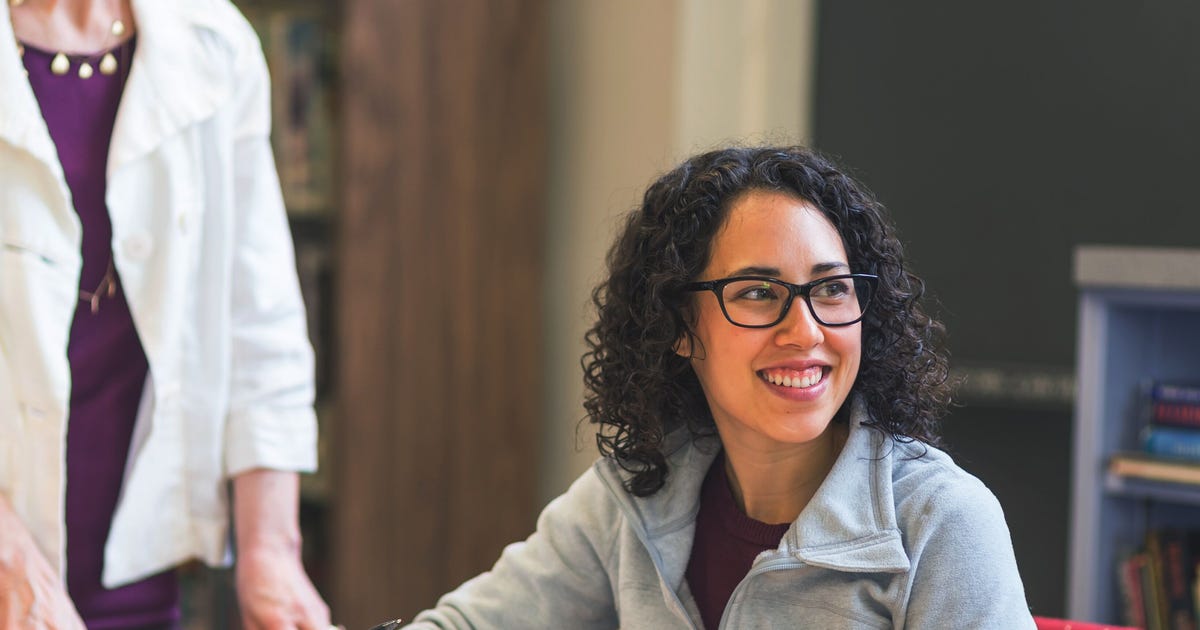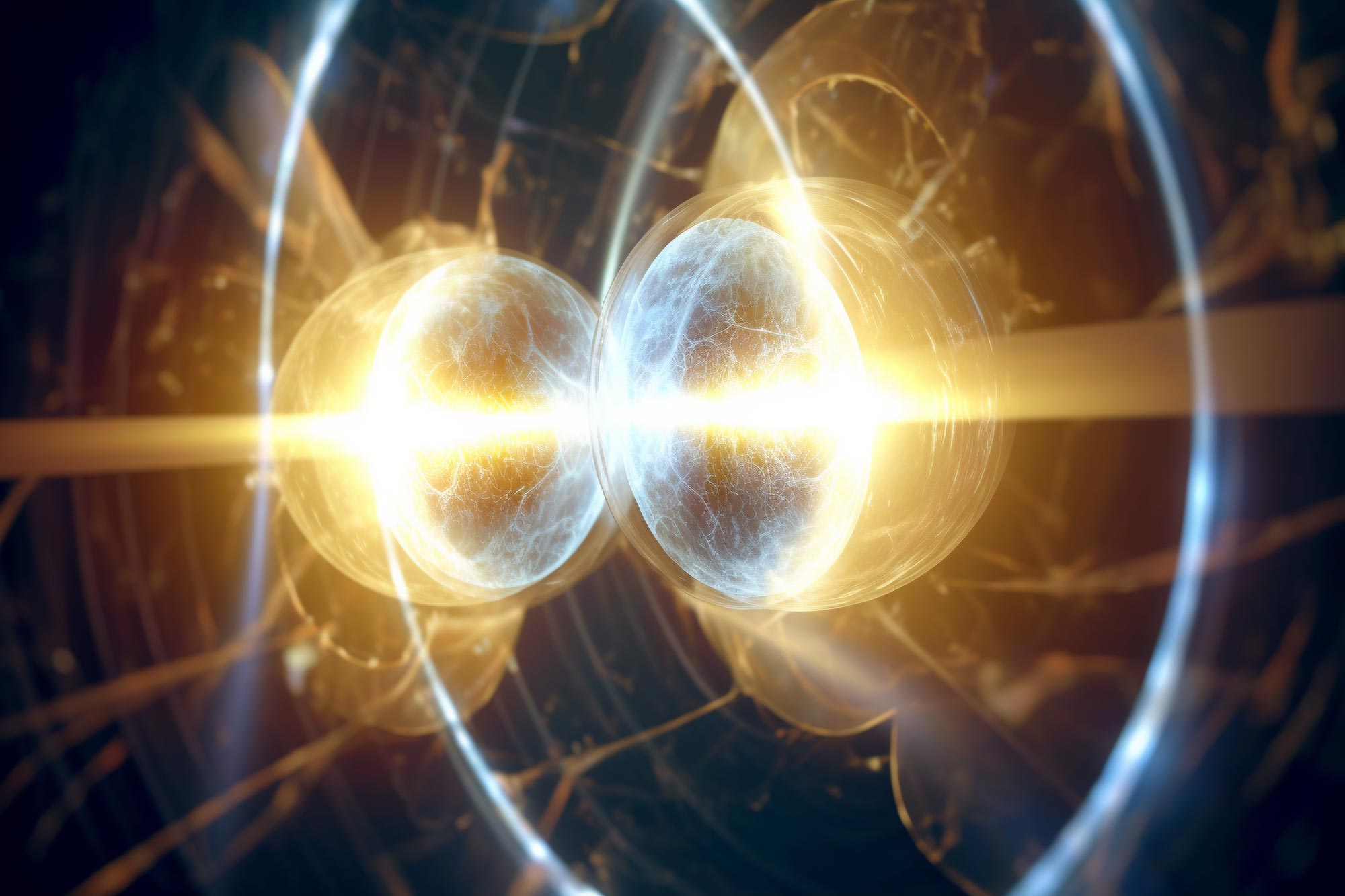
I fisici del MIT sono riusciti a creare immagini di coppie di particelle in una nuvola di atomi, fornendo nuove informazioni sul comportamento degli elettroni nei materiali superconduttori. La scoperta, documentata sulla rivista Science, potrebbe aiutare a comprendere la superconduttività e sviluppare ulteriormente l’elettronica senza calore. (Concetto artista.)
Le immagini evidenziano come gli elettroni formino coppie superconduttrici che scivolano attraverso i materiali senza attrito.
Quando un laptop o uno smartphone si surriscalda, è dovuto a una perdita di potenza nella traduzione. Lo stesso vale per le linee elettriche che trasmettono elettricità tra le città. Infatti, circa il 10% dell’energia generata viene persa durante la trasmissione dell’energia elettrica. Questo perché gli elettroni che portano una carica elettrica lo fanno come agenti liberi, scontrandosi e attaccandosi ad altri elettroni mentre si muovono collettivamente attraverso i cavi di alimentazione e le linee di trasmissione. Tutto quel rimescolamento genera attrito e, in ultima analisi, calore.
Ma quando gli elettroni si accoppiano, possono levitare al di sopra della mischia e scivolare attraverso un materiale senza attrito. Questo comportamento “superconduttore” si verifica in una gamma di materiali, anche se a temperature molto basse. Se questi materiali possono essere realizzati per supercondurre più vicino alla temperatura ambiente, potrebbero aprire la strada a dispositivi senza perdite, come laptop e telefoni senza calore e linee elettriche ultra efficienti. Ma prima, gli scienziati dovranno capire come si accoppiano gli elettroni.
Ora, nuove istantanee di particelle che si accoppiano in una nuvola di atomi potrebbero fornire indizi su come gli elettroni si accoppiano in un materiale superconduttore. Gli screenshot sono stati presi da[{” attribute=””>MIT physicists and are the first images that directly capture the pairing of fermions — a major class of particles that includes electrons, as well as protons, neutrons, and certain types of atoms.

MIT physicists have captured snapshots of particles pairing up in a cloud of atoms, which can provide clues to how electrons pair up in a superconducting material. In this data figure, the red and blue balls are spin-up and spin-down fermions, and some are paired together. The white sites are doubly occupied sites. Credit: Thomas Hartke
In this case, the MIT team worked with fermions in the form of potassium-40 atoms, and under conditions that simulate the behavior of electrons in certain superconducting materials. They developed a technique to image a supercooled cloud of potassium-40 atoms, which allowed them to observe the particles pairing up, even when separated by a small distance. They could also pick out interesting patterns and behaviors, such as the way pairs formed checkerboards, which were disturbed by lonely singles passing by.
The observations, reported on July 6 in the journal Science, can serve as a visual blueprint for how electrons may pair up in superconducting materials. The results may also help to describe how neutrons pair up to form an intensely dense and churning superfluid within neutron stars.
“Fermion pairing is at the basis of superconductivity and many phenomena in nuclear physics,” says study author Martin Zwierlein, the Thomas A. Frank Professor of Physics at MIT. “But no one had seen this pairing in situ. So it was just breathtaking to then finally see these images onscreen, faithfully.”
The study’s co-authors include Thomas Hartke, Botond Oreg, Carter Turnbaugh, and Ningyuan Jia, all members of MIT’s Department of Physics, the MIT-Harvard Center for Ultracold Atoms, and the Research Laboratory of Electronics.
A decent view
To directly observe electrons pair up is an impossible task. They are simply too small and too fast to capture with existing imaging techniques. To understand their behavior, physicists like Zwierlein have looked to analogous systems of atoms. Both electrons and certain atoms, despite their difference in size, are similar in that they are fermions — particles that exhibit a property known as “half-integer spin.” When fermions of opposite spin interact, they can pair up, as electrons do in superconductors, and as certain atoms do in a cloud of gas.
Zwierlein’s group has been studying the behavior of potassium-40 atoms, which are known fermions, that can be prepared in one of two spin states. When a potassium atom of one spin interacts with an atom of another spin, they can form a pair, similar to superconducting electrons. But under normal, room-temperature conditions, the atoms interact in a blur that is difficult to capture.

Zwierlein’s group has been studying the behavior of potassium-40 atoms, which are known fermions, that can be prepared in one of two spin states. From left to right: Carter Turnbaugh, Ningyuan Jia, Thomas Hartke, Martin Zwierlein, and Botond Oreg. Credit: Thomas Hartke
To get a decent view of their behavior, Zwierlein and his colleagues study the particles as a very dilute gas of about 1,000 atoms, that they place under ultracold, nanokelvin conditions that slow the atoms to a crawl. The researchers also contain the gas within an optical lattice, or a grid of laser light that the atoms can hop within, and that the researchers can use as a map to pinpoint the atoms’ precise locations.
In their new study, the team made enhancements to their existing technique for imaging fermions that enabled them to momentarily freeze the atoms in place, then take snapshots separately of potassium-40 atoms with one particular spin or the other. The researchers could then overlay an image of one atom type over the other, and look to see where the two types paired up, and how.
“It was bloody difficult to get to a point where we could actually take these images,” Zwierlein says. “You can imagine at first getting big fat holes in your imaging, your atoms running away, nothing is working. We’ve had terribly complicated problems to solve in the lab through the years, and the students had great stamina, and finally, to be able to see these images was absolutely elating.”
Pair dance
What the team saw was pairing behavior among the atoms that was predicted by the Hubbard model — a widely held theory believed to hold they key to the behavior of electrons in high-temperature superconductors, materials that exhibit superconductivity at relatively high (though still very cold) temperatures. Predictions of how electrons pair up in these materials have been tested through this model, but never directly observed until now.
The team created and imaged different clouds of atoms thousands of times and translated each image into a digitized version resembling a grid. Each grid showed the location of atoms of both types (depicted as red versus blue in their paper). From these maps, they were able to see squares in the grid with either a lone red or blue atom, and squares where both a red and blue atom paired up locally (depicted as white), as well as empty squares that contained neither a red or blue atom (black).
Already individual images show many local pairs, and red and blue atoms in close proximity. By analyzing sets of hundred of images, the team could show that atoms indeed show up in pairs, at times linking up in a tight pair within one square, and at other times forming looser pairs, separated by one or several grid spacings. This physical separation, or “nonlocal pairing,” was predicted by the Hubbard model but never directly observed.
The researchers also observed that collections of pairs seemed to form a broader, checkerboard pattern, and that this pattern wobbled in and out of formation as one partner of a pair ventured outside its square and momentarily distorted the checkerboard of other pairings. This phenomenon, known as a “polaron,” was also predicted but never seen directly.
“In this dynamic soup, the particles are constantly hopping on top of each other, moving away, but never dancing too far from each other,” Zwierlein notes.
The pairing behavior between these atoms must also occur in superconducting electrons, and Zwierlein says the team’s new snapshots will help to inform scientists’ understanding of high-temperature superconductors, and perhaps provide insight into how these materials might be tuned to higher, more practical temperatures.
“This is an exciting new work,” says Immanuel Bloch, professor of experimental physics at the Ludwig-Maximilians University in Munich, who was not involved with the work. “It’s a beautiful example of how intricate correlations can be directly observed in these highly controlled quantum simulation experiments, and will stimulate thinking about more complex correlations patterns that can be directly captured in the experiment.”
Reference: “Direct observation of nonlocal fermion pairing in an attractive Fermi-Hubbard gas” by Thomas Hartke, Botond Oreg, Carter Turnbaugh, Ningyuan Jia and Martin Zwierlein, 6 July 2023, Science.
DOI: 10.1126/science.ade4245
This research was supported, in part, by the U.S. National Science Foundation, the U.S. Air Force Office of Scientific Research, and the Vannevar Bush Faculty Fellowship.

“Fan zombi sottilmente affascinante. Fanatico della TV. Creatore devoto. Amico degli animali ovunque. Praticante del caffè.”


